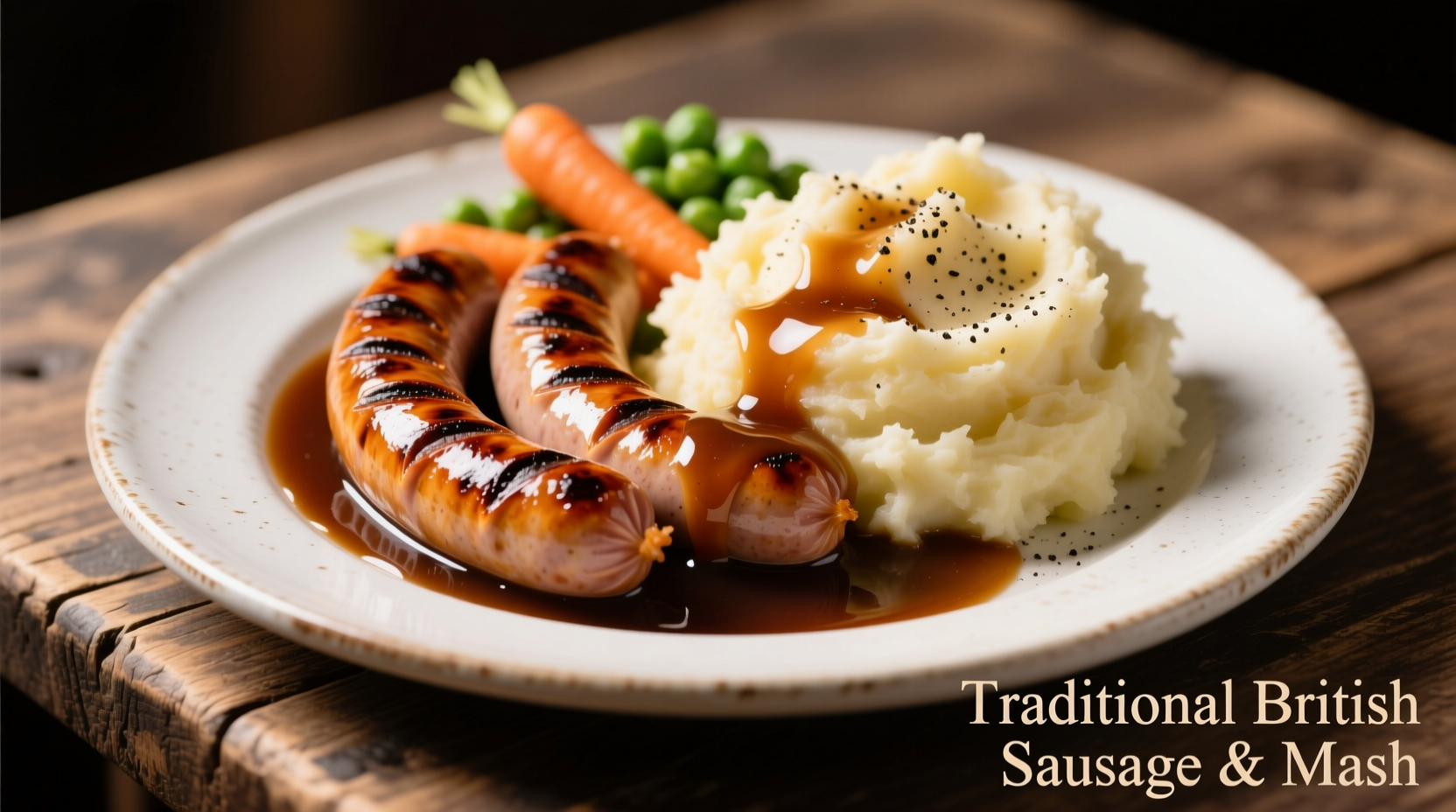The Heartwarming History of Britain's Favorite Comfort Food
Understanding the origins of sausage and mash helps appreciate why this dish resonates so deeply with British food culture. While sausages have been part of British cuisine since Roman times, the specific combination with mashed potatoes and onion gravy emerged during the Industrial Revolution when affordable, hearty meals were needed for working-class families.
Evolution of Sausage and Mash: A Historical Timeline
- 1840s: Potato cultivation becomes widespread in Britain after the Irish famine, making mashed potatoes an affordable staple
- 1880s: Butchers begin selling "bangers" (sausages with high water content that would burst when cooked) as an economical meat option
- Early 1900s: Onion gravy becomes the traditional accompaniment, using the sausage cooking juices for enhanced flavor
- World War II: The "Dig for Victory" campaign encouraged home sausage making when meat was rationed
- 1970s-Present: Transforms from working-class meal to pub classic and national comfort food icon
Essential Ingredients for Authentic Flavor
The magic of sausage and mash lies in its simplicity, but choosing quality components makes all the difference. Traditional British pork sausages contain around 42% meat with breadcrumbs, herbs, and spices—not the highly processed varieties found elsewhere.
| Traditional Preparation | Modern Shortcuts | Impact on Final Dish |
|---|---|---|
| Onions slowly caramelized for 30+ minutes | Quick sautéed onions (5-7 minutes) | Deep, complex sweetness vs. raw onion flavor |
| Homemade stock from sausage bones | Store-bought stock cubes | Richer, meatier gravy with better mouthfeel |
| Russet or Maris Piper potatoes | Waxy potato varieties | Creamy texture vs. gluey, waterlogged mash |
Step-by-Step Preparation Guide
Making Perfect Creamy Mash
Start with 2 pounds of Maris Piper potatoes (the traditional British choice), peeled and cut into even chunks. Boil in salted water until fork-tender (15-20 minutes). Drain thoroughly—excess water is the enemy of good mash. Return to the warm pot for 1 minute to evaporate residual moisture. For authentic texture, use a potato ricer rather than a food processor which can make mash gluey.
Mash with 4 tablespoons of unsalted butter and 1/2 cup warm whole milk. Season with sea salt and freshly ground black pepper. The key to restaurant-quality mash is temperature control—keep ingredients warm throughout the process.
Selecting and Cooking the Best Sausages
Look for British sausages with at least 42% meat content, preferably from a local butcher. Traditional varieties include:
- Lancashire: Contains sage and has a distinctive crumbly texture
- Cumberland: Made with coarsely ground pork and black pepper
- Lincolnshire: Features pronounced sage flavor
Cook sausages in a preheated oven at 190°C (375°F) for 20-25 minutes, turning once. This method prevents splitting while rendering fat evenly. Reserve the cooking juices for the gravy—they're packed with flavor.
Crafting Rich Onion Gravy from Scratch
This is where many home cooks miss the mark. Authentic British onion gravy requires patience:
- Slice 3 large onions thinly and cook slowly in 2 tablespoons of the reserved sausage fat over low heat
- Allow onions to caramelize for 25-30 minutes until deep golden brown (not burnt)
- Add 2 tablespoons plain flour and cook for 2 minutes to remove raw taste
- Gradually whisk in 500ml (2 cups) of good quality beef or chicken stock
- Add 2 tablespoons of Worcestershire sauce and a splash of red wine (optional)
- Simmer for 15 minutes until thickened to a coating consistency

Serving Suggestions and Regional Variations
While the classic version features pork sausages, regional variations abound across the UK:
- Scotland: Often includes neeps (mashed turnips) alongside the potatoes
- Northern England: May feature black pudding as an additional component
- Wales: Sometimes incorporates laverbread (seaweed) in the sausage mixture
For the authentic pub experience, serve in a wide, shallow bowl with the mash forming a bed, sausages arranged on top, and generous gravy poured over everything. Pair with a side of mushy peas for the complete traditional experience.
Common Mistakes to Avoid
Even experienced cooks can stumble with this seemingly simple dish. Watch for these pitfalls:
- Rushing the onions: Proper caramelization takes time—don't increase heat to speed the process
- Using cold dairy: Chilled milk or butter causes potatoes to seize up
- Overworking the mash: Results in gummy texture rather than light and fluffy
- Skipping the resting step: Let sausages rest for 5 minutes after cooking for juicier results











 浙公网安备
33010002000092号
浙公网安备
33010002000092号 浙B2-20120091-4
浙B2-20120091-4